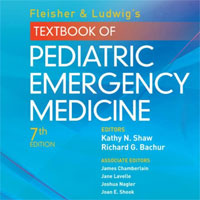Tag: surgery
Predicting Renal Outcomes in Cardiac Surgery Using Intraoperative Renal Near-Infrared Spectroscopy Monitoring
This study shows that intraoperative monitoring of near-infrared spectroscopy (NIRS) values and monitoring of critical thresholds may be an important tool in predicting the development of acute renal failure (ARF) and other... read more
Extubation in the Operating Room After Elective On-pump CABG Surgery
Although immediate extubation in the operating room following on-pump coronary artery bypass graft (CABG) surgery did not show significant differences in ICU or hospital length of stay (LOS), mortality, or ICU readmission... read more
Major Cardiovascular Surgery-induced Metabolic Reprogramming Role in AKI
Major cardiovascular surgery, particularly with cardiopulmonary bypass (CPB), induces significant changes in protein metabolism. Patients developing postoperative acute kidney injury (AKI) exhibited specific metabolic signatures.... read more
Blood Glucose and Clinical Outcomes After ECC
Postoperative blood glucose levels significantly impact outcomes in cardiac surgery patients undergoing extracorporeal circulation (ECC) auxiliary to open heart surgery. The study's primary outcome was the 90-day mortality,... read more
Failure to Rescue in ALF
The concept of failure to rescue has been used to measure the quality of care for complications developed following surgery. In patients with acute liver failure (ALF), the concept of failure to rescue highlights the... read more
POCUS-first vs. CT-first Approach on ED LOS in Patients with Acute Cholecystitis
While point-of-care ultrasound (PoCUS)-first and computed tomography (CT)-first approaches resulted in comparable emergency department (ED) length of stay (LOS) and time to surgical consultation for patients with mild AC,... read more
Single Lumen vs. Double Lumen Endotracheal Tube For Postoperative Swallowing Function in Lung Transplantation Patients
BackgroundThis study was conducted to investigate the effect of endotracheal tube type on post operative dysphagia in patients undergoing lung transplant surgery. Will patients who are intubated with a single lumen endotracheal... read more
Factors Associated with Delayed Extubation in Post Cardiac Surgery Patients
The process of extubation is a crucial phase in postoperative care. By comprehending the elements that impact DE, healthcare providers can effectively allocate medical resources to enhance the success of weaning, extubation,... read more
Fast-Track in Cardiac Anesthesia: Cardiac Surgery in the Era of ERAS
This new book, focused on fast-track approaches in cardiac surgery, covers ERAS cardiac guidelines, explores the application of loco-regional anesthesia in cardiac surgery, and addresses all aspects related to early extubation... read more

Successful Treatment of Unilateral Pulmonary Edema as Minimally Invasive Mitral Valve Surgery Complication
We successfully treated this patient using ECMO and independent lung ventilation. Several cases have been described in the literature, but the pathogenesis and risk factors of UPE remain unclear. Management depends on... read more
Ketamine May Reduce Opioid Requirements Following Cardiac Surgery
Ketamine may be a reasonable choice for postoperative cardiac surgery analgesia and may reduce the need for opioids on discharge, and possibly during admission. This study is a single center, retrospective, observational,... read more
Effects of Surgery on Hemodynamics and Postoperative Delirium in Stanford Type A Aortic Dissection
The results of this study indicate that surgical intervention has a significant effect on improving patients’ hemodynamic parameters, with postoperative MAAD and LVEDd reduced compared to preoperative levels, while LVEF... read more
Association Between Comorbid COPD and Prognosis of Patients Admitted to ICU for Non-COPD Reasons
Comorbid COPD increased the risk of 28-day mortality among patients admitted to the ICU for non-COPD reasons, especially for those admitted to the cardiac surgery recovery unit. A retrospective cohort study was performed... read more
Trauma Medical Home: New Coordinated Care Model for Injured Older Adults
Older adults who suffer serious injuries from a fall or a motor vehicle accident often have impaired long-term functioning and diminished quality of life. A new study, published in JAMA Surgery by researcher-clinicians... read more
A nomogram predicting pneumonia after cardiac surgery
Three preoperative indicators (age, preoperative malnutrition, diabetes mellitus), one intraoperative indicator (CPB > 135 min) and three postoperative indicators (moderate to severe ARDS, use of ECMO or IABP or CRRT, MV>... read more
A Global Perspective on AKI After Major Surgery
Acute kidney injury (AKI) is an abrupt decline in kidney function occurring within hours or days. In patients having surgery, postoperative AKI is a major complication associated with adverse outcomes including mortality.... read more
Fleisher & Ludwig’s Textbook of Pediatric Emergency Medicine
Fleisher & Ludwig's Textbook of Pediatric Emergency Medicine has long been acknowledged as the indispensable comprehensive clinical reference on diagnosing and managing emergent health issues in children. Now, a new editorial... read more

Epidemiology of Surgery Associated Acute Kidney Injury (EPIS-AKI)
In a comprehensive multinational study, approximately one in five patients develop PO-AKI after major surgery. Increasing severity of PO-AKI is associated with a progressive increase in adverse outcomes. Our findings indicate... read more
Impact of Variations in the Nursing Care Supply-Demand Ratio on Postoperative Outcomes and Costs
Improving surgical outcomes is a priority during the last decades because of the rising economic health care burden. The adoption of enhanced recovery programs has been proven to be part of the solution. In this context,... read more
Spotlight on Aortic Stenosis and Dissection
This Focus Issue on valvular heart disease contains the State of the Art Review article "ESC/EACTS vs. ACC/AHA guidelines for the management of severe aortic stenosis" by Grace Lee from the Temerty Faculty of Medicine in... read more
The High-risk Surgical Patient
It is well known that certain diseases and patient conditions are associated with increased perioperative risk. The aim of this book is to define and identify the clinical factors that warrant a broader and more detailed... read more

Trauma Group Publishes Action Plan, Makes Data Available for Secondary Analyses
The American College of Surgeons (ACS) has long advocated for the creation of a US National Trauma System to improve quality of care, decrease inequities, and save lives as one of its top legislative priorities, part of which... read more









